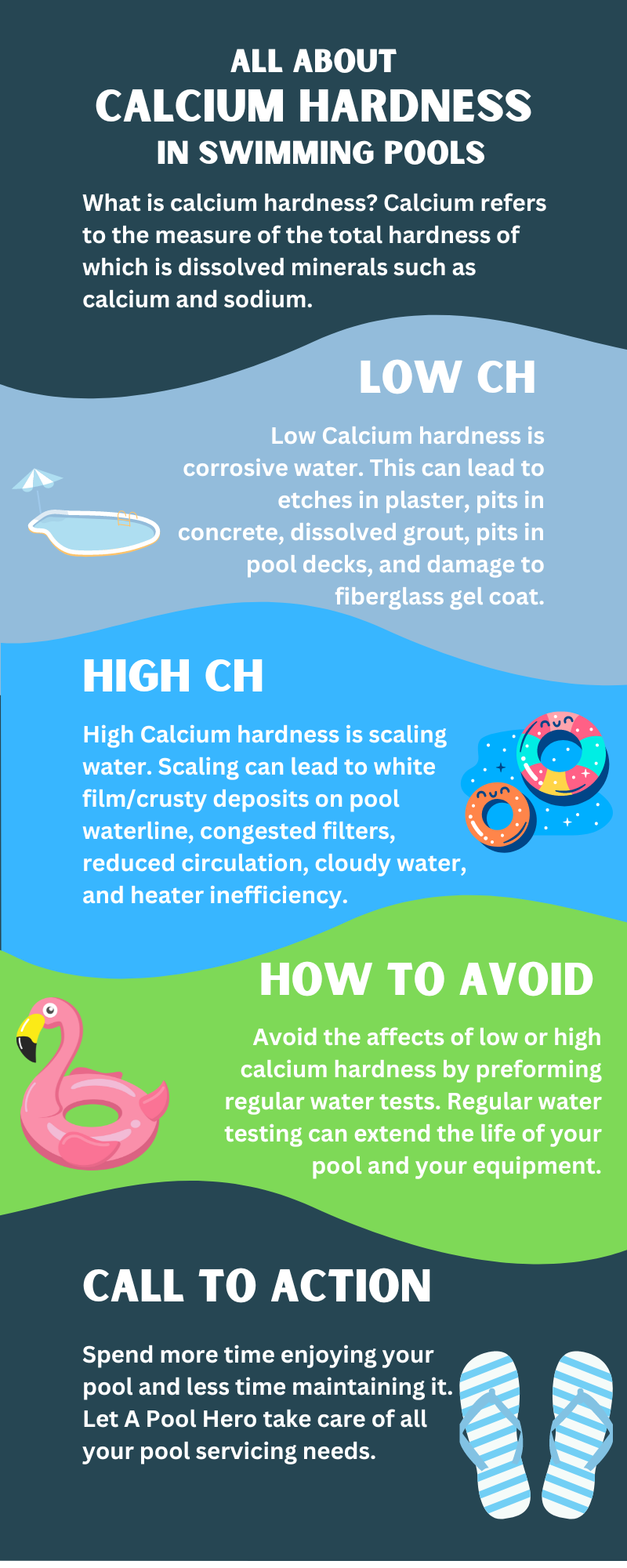Calcium Hardness in Swimming Pools [Infographic]
Introduction
Calcium hardness refers to the dissolved calcium content in your pool water. This value is crucial for maintaining water that is neither corrosive nor encrusted with scale-forming minerals. The ideal range for calcium hardness in pools is between 200 and 400 parts per million (ppm), which shields against both equipment damage and water quality issues. A calcium hardness level below 200 ppm can lead to corrosion, while exceeding 400 ppm results in scaling, with its own set of aesthetic and mechanical perils.
Infographic
Closing
In the tranquil world of your swimming pool, each drop of water plays its part in maintaining the balance. Yet, it's the collective equilibrium of pH, alkalinity, and calcium hardness that transforms a pool from a mere body of water into a cherished retreat. By understanding and respecting the role of calcium hardness, you empower yourself to tackle the nuances of pool care with precision and poise.
Call-to-Action
High or low, the stakes of calcium hardness in pool water are as real as they come. Take the plunge into meticulous water care, and you’ll be rewarded with a pool that's visually stunning and structurally sound. Spend more time floating in your oasis, and less time worrying about potential pool woes. A harmonious swimming pool is not only an asset to your property but also a testament to your dedication to quality pool maintenance.

